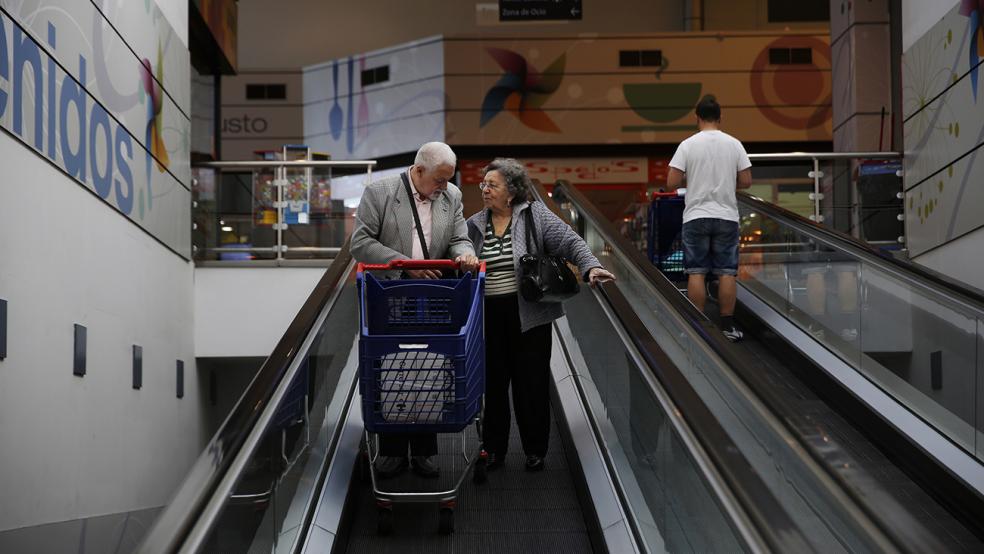As the biggest retail confab of the year kicks off in New York City, leaders from the world’s biggest brands are gathering to share their innovations, make connections and offer up solutions. One focus of the convention, organized by the National Retail Federation, is no doubt the 21st century transition from mall and in-store focus to on-line marketing and purchasing.
Curiously, though, the other mega-trend of our era – population aging and its attendant longevity economy, which is estimated to be worth about $15 trillion – is receiving little notice.
Top Reads: 15 Great Jobs for Retirees
If you’re in health care, financial services or technology, the strategic importance of the silver economy is already evident. The 1 billion people over 60, reaching 2 billion by mid-century, is well understood in those C-suites to constitute an exploding marketplace, and one that requires an “aging strategy.” But the billion and growing over 60 are also consumers with different tastes, needs, desires and demands than other demographic groups.
The big show convening at New York City’s Javits Center would be an ideal launching point for such strategies. New York City itself has taken impressive initiatives to become age friendly, with dedicated work being done in housing, work, transportation, public safety and more. Moreover, given New York’s history as a pioneer in commerce and business, it is the perfect place to foster the marrying of the retail agenda with the aging of our society.
The National Retail Federation would have promising leaders to follow. The OECD has laid out ways for technology, finance and social entrepreneurship to prosper in an era of aging populations. BlackRock, the world’s largest asset manager, is redefining retirement and showing how to “unlock the longevity dividend.” A recent event in Helsinki, hosted by former Finnish Prime Minister Esko Aho, explored opportunities that emerge from combining digital capabilities with aging populations. And investors are beginning to take notice, since these strategies can be good for share prices.
The opportunity for retail isn’t to pay lip-service to this demographic transformation, but to ask how their growth models can succeed in a world with more old than young. How are brick-and-mortar stores inviting and catering to the unique demands of “seniors”? How are work forces being constructed to assist older adults? How are online tools, interfaces and platforms creating a user experience that meets the needs of silver shoppers? How is the “omni-channel” revolution informed by one of the greatest demographic evolutions of humankind?
Top Reads: The Best and Worst States for Taxes in 2017
The answers to these questions are, of course, devilishly complex. But if retail can align on the opportunity it is trying to solve – how retail can thrive in the 21st century as the world is shaped by an aging society – there will be considerable contributions to business success, economic growth and jobs creation.
Moreover, retail needs to recognize that older consumers are far more open to and already engaged with the digital economy. So a twin strategy of “aging and digital” might not be such a bad idea. Consider the U.S. data on the nexus of our 60+ population and their on-line commercial engagement:
- Six in ten seniors now go online, and just under half are broadband adopters (Pew, 2014)
- Younger, higher-income and more highly educated seniors use the internet and broadband at rates approaching — or even exceeding — the general population (Pew, 2014)
- More than half of all Americans now have a smartphones. Older adults use tablets and e-readers at about the same rate as they do smartphones, unlike the general population. (Pew, 2014)
- Tablet computers, which have bigger screens and are often easier to use than smartphones or laptops, are becoming popular devices for people over 75. (NYT)
- As of last year in America, about 60 percent of those 65 and older shopped online (Pew, 2016)
If you’re a retailer coming to the Javits Center this weekend for your annual get together, you’re probably already thinking about the 60+ consumer. But do you have an aging strategy and a plan for an additional 5, 10 or 30 percent growth based on it?





